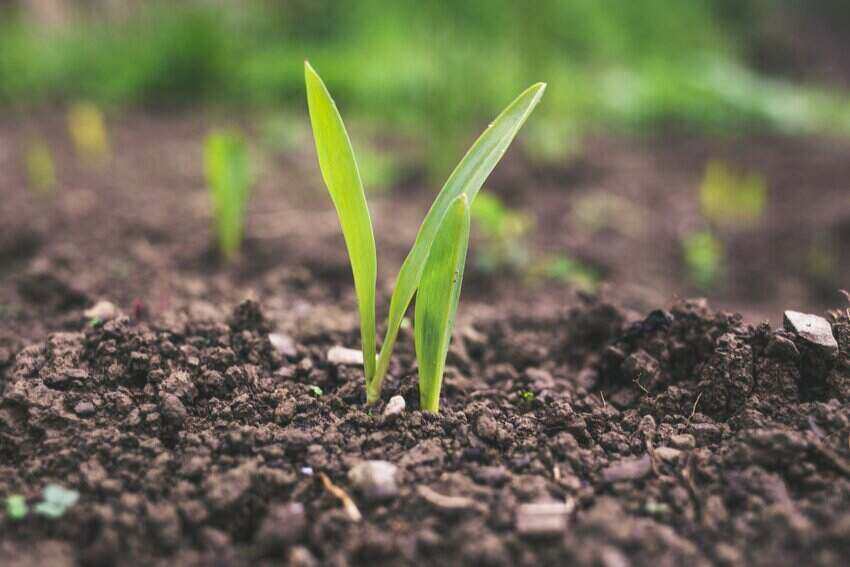Gardeners may notice green fertilizer balls (like the yellow or orange balls) in the soil sometimes, thus they might get concerned about these balls as they think these balls might harm the potted plants. That’s why the question should be answered what are these balls.
These tiny balls are most likely slow-release fertilizer granular, which have been incorporated into the soil for a long time. The disintegration rate of these fertilizer pellets increases with rising temperatures, rain, and watering.
So in this article, you’ll get to know whether these balls are harmful to your garden or not in detail. So let’s get started.
Everything about Green Fertilizer Balls in Soil

What Are Green Fertilizer Balls In Soil?
Recently if you’re noticing green color balls in the soil you might be thinking what are these balls. However, it could be turned out to be three things: Fertilizer balls. Seeds or Pest eggs.
A. Fertilizer Pills
The possibility exists that the little green balls seen in the soil are slow-release fertilizer tablets. The goal of these slow-release fertilizer balls with the appearance of granules is to complement the nutrients found in the soil. In contrast to liquid fertilizers, they do not dissolve easily in water.
When used in nurseries, fertilizer balls are often combined with potting soil before being applied to plants i.e. citrus fertilizer. They have the ability to progressively provide plants with all of the nutrients that are necessary for them to flourish and grow stronger over time.
These fertilizer pellets are unlikely to do any damage to your plants, which is a fortunate development. Instead, they will actually help their development by gradually releasing nitrogen, phosphate, potassium, and a variety of other nutrients. This will occur over the course of many years.
However, using an excessive amount of synthetic fertilizer may be detrimental to the health of your plants, and sadly, there may be no way to determine for certain whether or not the substance that was applied was organic.
Most experts will suggest Slow-Release Plant Food to you if you are looking for a fertilizer that will guarantee your plant continues to develop healthily for an extended period of time with just minimum attention from you. You may go to it by clicking on this link right here.
B. Fruits Or Seeds
The little green balls may, in certain cases and depending on the plant, also be fruits or seeds that have fallen from or been disseminated by other plants. This is possible in some instances. To establish whether or not anything is a seed, you need to squeeze it out completely.
A fully or ripened ovary that typically includes seeds is referred to as a fruit. Many types of plants rely on their fruits to help spread their seeds to new locations.
Because there are certain plant seeds, such as mold, that mimic balls, the alien balls that are occasionally seen in potting soil might really be the seeds of the fruit of the plant that is growing in it.
This may take place if the fruit ripens and then falls to the ground, where it will eventually disclose the seeds as it decomposes.
While fertilizer balls are loaded with fluids or salts, seeds include embryos as well as stores of food reserves in most plant species. This makes it simple to tell the difference between the two types of seeds and to grow your own healthy plants.
C. Pests Eggs
There is a remote possibility that the green balls found in potting soil contain the eggs of insects or other pests; nonetheless, these balls may be differentiated from fertilizer balls.
Eggs of insects are often about the same size as balls made of fertilizer or perlite, and they do not have a tough protective shell. When touched, they have the consistency of ooze and have a mushy feel to them.
One possibility is that they take on an elongated shape as opposed to a spherical one. In addition, insect eggs are often found in a single spot, while fertilizer pellets are typically dispersed uniformly throughout the surface of the soil.
Worm eggs, eggs laid by slugs and snails, eggs laid by ants, eggs laid by weevils, and eggs laid by ladybugs are the most frequent types of eggs laid by insects and pests.
The eggs of slugs and snails, for example, resemble fertilizer balls more than anything else, with the exception of some species, such as the giant snail and all larger snails.
Fertilizer balls may look like slug eggs in certain parts of the country, but slug eggs are often paler and more translucent than fertilizer balls, depending on where you live.
In a similar manner, the size and color of worm eggs might cause them to be mistaken for fertilizer balls. However, upon closer inspection, one will see that worm eggs are often not exactly spherical but rather somewhat elongated in shape.
Therefore, careful inspection is required to differentiate between fertilizer balls and the eggs of insects or other pests.
Do Green Balls of The Potting Soil Affect Plants Growth?
Plants may or may not suffer damage as a result of these mysterious green balls; it all depends on if these balls contain any chemicals or not. As a result, it’s critical that you recognize them as soon as you see them.
Green Fertilizer Balls Might Not Hazardous
Green fertilizer Balls are not harmful to plants at all. Slow-release fertilizers, such as these balls, provide a steady supply of nutrients to a potted plant. They supply essential nutrients to the plants. Because green-fertilizer balls take two years to disintegrate fully, you may expect to see them dispersed around the soil’s surface.
Green Insect Eggs Might Be Harmful
If you’ve found insects or other unknown eggs in your potting soil, it’s possible that the dirt may injure or kill your plant. When these eggs hatch into larvae, they may chew through your plant, so get rid of them as soon as you see them.
How to Get Rid of Green Fertilizer Pellets in Garden Soil or Potting Soil?

If the green balls are fertilizer, don’t worry about removing them; they won’t hurt your plants. Eggs should be disposed of as quickly as possible if they are discovered.
Changing The Plant’s Container
Getting rid of insects or ants will be much simpler if you repot the plant. Remove all of the dirt and dispose of it. Place the roots back in the potting soil after wiping them clean with an alcohol-soaked cotton swab. Insects should be watched for at least a week before resuming a usual routine of care.
While repotting it’s recommended to use the right potting mix like Miracle-Gro indoor potting mix.
Handpicking
The next thing can be done is that you can remove the top layer of soil and dig gently to remove the unwanted plants. Before you replace the dirt, make sure to inspect the roots for any eggs.
Put on gloves to prevent being stung by the insects when using this procedure. Wash your hands properly if you come into contact with any insects.
Spread Seeds or Fruits
If the fertilizer green balls are actually fruits or seeds, it’s recommended to remove them too. Although, they don’t harm the potted plants, still, they might grow undesirable weeds.
And once weeds are grown, they will fight with your plants and vegetable for space and nutrients, which would be harmful to your plants in the long run. So, spot the unwanted green seeds or fruits and pick them out soon.
Pest Control with Chemicals
It’s best to use chemical insecticides as a last resort after exhausting all other options. Organic gardeners should avoid using it because of the potential damage it might do to nearby plants and animals. To prevent injuring your plants or pets, read the directions carefully before using the product.
Conclusion
So far you got to know about green fertilizer balls in soil. However, it might be fertilizer prills, pests eggs, and seeds. However, if you find fertilizer balls in the soil there’s nothing to worry but if it is pests’ eggs try to remove them as soon as possible.
To get rid of these green balls, you can re-pot the plants, remove them by hand, or apply pesticides. Hopefully, you now get an effective solution for green fertilizer pellets in potting soil or garden soil problems.

I’m Shofi, a passionate gardener and blogger. I have 10+ years of experience in gardening and hold certifications in horticulture and garden design. I share my knowledge and skills through my garden blog to inspire and educate others on the joys of gardening. I try to provide valuable information and create a community for gardeners of all levels to connect and learn. My ultimate goal is to inspire others to start their own gardens and connect with nature.
